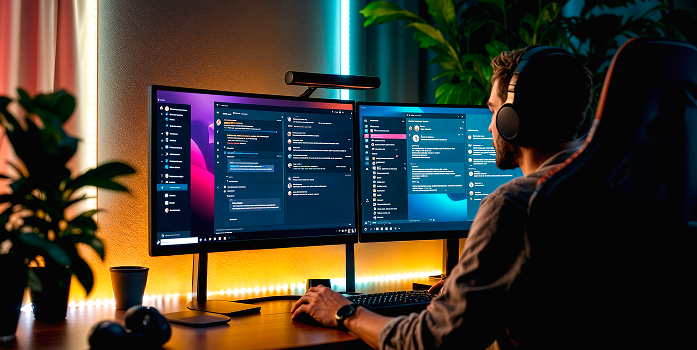Time And Cost Of Developing The Uber Like App
- February 21, 2024
-
2415 Views
- by Ishan Vyas

Uber pioneered the ride-sharing model, and its app capabilities became ideal for other players to emulate. Due to this reason, the market of online taxi app developments is increasing and it is predicted to reach $283 billion by 2028 as every aspiring entrepreneur wants to start a taxi app service business to boost their profits. For entrepreneurs planning their own Uber-like app, estimating timelines and costs during development stages is important for planning. Standard phases like research, design, coding, and testing need factoring along with features needed.
Key Components of an Uber Like App
1.User App
Registration and Profile Creation:
The user app allows riders to sign up for an account by entering their personal details and contact information. Their profile stores details like payment methods to enable seamless bookings and payments. Users can also opt to save favourite locations to make future bookings faster.
Service Request Process:
Users can book the trip via the platform by filling out their pickup location and final destination. The platform shows them to nearby drivers and shows factors like the driver’s name, car model, license plate, rating, etc. By selecting from their favourite address or by adding the necessary information, they can order the ride from and to anywhere.
There are various options for the users of drivers from which they can pick the driver. The fare estimate is shown upfront for transparency. Users can then track the driver in real-time as they make their way to the pickup point.
Real-time Tracking:
Through GPS integration, the app tracks the dispatched driver and shows their real-time location and expected arrival time. Users get updates on the ride’s progress and can contact drivers via call or chat. The app also has an emergency button to instantly connect to support. Through this service, users get to know the live update about their service and even have an idea about the estimated time of arrival.
2. Driver App
Earnings and Ratings:
The app offers drivers a detailed breakdown of their daily rides, miles logged, and overall earnings. Their customer rating helps them improve services for more rewards. Top-rated drivers also get priority in dispatch systems. The app makes financial transactions and analytics quick and transparent.
Accepting and Completing Requests:
The driver app shows available ride requests nearby. Drivers can choose requests based on payment, destination, rating, etc. Once they accept a ride, turn-by-turn navigation helps complete it efficiently. On completion, payments are transferred instantly to the driver’s account.
Driver Registration:
Drivers can sign up by providing vehicle and license details. They need to undergo background checks before being onboarded. The app digitizes documents and certifications to enable a seamless application process.
Aspects Affecting Cost for the Uber Like App Development
The Type Of Operating System For The App Development
The main cost of the development depends on the type of operating system the firm chooses for the app launch from the available options, Android and iOS. Each of the systems requires dedicated systems and development platforms. iOS costs are mostly affected by the inflexible guidelines and adaptability of its devices, whereas Android costs are dependent on its efforts of compatibility with multiple devices available.
The UI/UX Will Affect The Development Cost
Creating an engaging interface for the app is important as it is the first thing the users will interact with, and the strategy of designing the app affects the app’s development costs. Creating visually appealing graphics that attract users to the app requires the advanced flow of the app and the incorporation of advanced features. All these factors add up to the costs of the development process.
Incorporating Powerful Security features Needs Additional expense
For making user data secure in the app and gaining the customer’s loyalty, it is very essential to have the strong security features mentioned in the above image and ensure the users that their data is safe in the app. Integrating these features into the app requires additional costs during the app development.
Furthermore, after developing and launching the app in the platform for downloads, giving regular updates is essential for updating and making the app’s security strong and ensuring the scalability of the app; this even requires additional costs.
Marketing Of The App Needs The Extra Investment
Developing the app is not enough to make the profits of the business. Marketing the app is also an essential factor after the app development process. It helps the business increase its market reach and prompt the app. Furthermore, it also costs extra on the development cost depending on the type of marketing method.
The phases of the Development, which require extra Expenses
1. Planning
Approximately 12% of the cost is required in the planning phase of the app development, which is further divided into 2 main factors, which are as follows:
Defining Features:
Using market insights, the core features and functionality of the app are defined. Focus is placed on standout features that will differentiate the service from competitors. Furthermore, having the advanced feature in the app is essential as it helps the firm in furnishing convenience to the users. However, incorporating the advanced attributes in the app needs additional expenses.
Market Research:
Extensive market research is done using various tools that add up to the cost of development to understand consumer needs, the competitive landscape, and the scope of expansion. Surveys, interviews, and data analytics help formulate the right offering to attract customers. Furthermore, inspect and list the competitors in the market and try to identify their strengths and weaknesses in their services. This research helps the firm prove the improved and better customer experience and even requires investments as this process requires various tools to help.
Planning Phase Timeline:
The planning phase is expected to take around 3-4 weeks. This involves market scans to gauge competition, customer demographics, and growth potential. Defining the minimum viable product (MVP) features also falls under the planning phase based on core objectives, resources, and capabilities. The project plan with timelines is also carved out during this initial phase.
2. Design
Prototyping:
yes, it requires an extra cost, but it’s the best investment. Prototypes are created to simulate the actual app experience. These prototypes are tested with focus groups to gain insights on design effectiveness and scope of improvement. Feedback is incorporated iteratively to refine the prototypes.
UI/UX Design:
Easy user flow is ensured through intuitive UI/UX design. The customer journey from onboarding to booking rides is visualized and designed accordingly. Factors like visibility, ease of use, and engagement are built into the layouts, interfaces, and information architecture. This phase requires more time and expenses as the app needs advanced design and strategies.
Design Phase Timeline:
An estimated 5-6 weeks can be allocated for the design phase. Two weeks would involve conceptualizing the customer journey and building user personas, flowcharts, and information architecture plans. Another two weeks go into the UI/UX design of different app screens and touchpoints. The rest of the timeline involves iterative prototyping to refine designs based on user feedback from focus groups and expert review.
3.Development
Backend Development:
Scalable backend infrastructure is crucial for the seamless functioning of the app. It provides the smooth and efficient operation of your app. The backend infrastructure includes server hosting, database management, and other related expenses. Thus, engage with the firm providing the Uber clone app using robust backend frameworks. Utilizing the best backend frameworks helps ensure the scalability of the app.
id=”docs-internal-guid-ee7efc2b-7fff-e082-99fc-1d2be3a8e74e”>The app’s scalability is essential for it to be successful and to make sure that it can handle the high numbers of users in the app and can load in very little time to enhance the user experience.
Backend development phase timing:
It needs to set up strong APIs, and servers, create the database, and integrate the other requirements in the app. Therefore, 6 to 10 weeks in the development of the back end, and even more timing goes into erecting a robust and scalable backend architecture.
Frontend Development:
The visual interfaces are coded to life using languages like React Native, Flutter, etc. Get web development services or coding best practices around modularity and reusability are employed to streamline development. The influencing cost factors in this phase include website responsiveness and the complexity of animations. To sum up, the front-end development phase might take an average of two to six weeks.
Frontend development phase timing:
Users interact with the front ends, and it needs timing in designing and then developing the whole front end. Thus, at least 4 weeks is reserved for frontend app development spanning multiple OS platforms like iOS and Android.
Testing:
Rigorous testing protocols across QA, UAT, performance testing, security testing, etc. help identify and eliminate bugs. Automation accelerates testing procedures, enabling faster go-to-market. Dedicated mobile app testing tools like Appium are utilized. It is a time-consuming process that ensures it runs smoothly on different devices and platforms. The cost of testing depends on the time and resources needed.
Testing Phase Timeline:
While testing is inherently part of the development lifecycle, an additional 4-6 weeks can be set aside exclusively for testing activities. Exploratory tests, automated scripts, real device testing, load tests, and UATs would consume the bulk of this timeline. Buffer time is also allotted for defects found and fixed during user acceptance and pilot testing before the final launch.
Conclusion
An Uber-like on-demand taxi app takes around 4-6 months to develop, with average costs ranging from $100,000 to $250,000. Time and costs vary based on custom features, team size, and locations. While significant investments are needed initially, the potential revenues justify costs for aspiring mobility entrepreneurs.





 SaaS Development
SaaS Development Web Application Development
Web Application Development Mobile Application Development
Mobile Application Development Custom Software Development
Custom Software Development Cloud Development
Cloud Development DevOps Development
DevOps Development MVP Development
MVP Development Digital Product Development
Digital Product Development Hire Chatbot Developers
Hire Chatbot Developers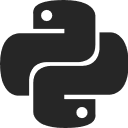 Hire Python Developers
Hire Python Developers Hire Django Developers
Hire Django Developers Hire ReactJS Developers
Hire ReactJS Developers Hire AngularJS Developers
Hire AngularJS Developers Hire VueJS Developers
Hire VueJS Developers Hire Full Stack Developers
Hire Full Stack Developers Hire Back End Developers
Hire Back End Developers Hire Front End Developers
Hire Front End Developers AI Healthcare Software Development & Consulting
AI Healthcare Software Development & Consulting Healthcare App Development
Healthcare App Development EHR Software Development
EHR Software Development Healthcare AI Chatbot Development
Healthcare AI Chatbot Development Telemedicine App Development Company
Telemedicine App Development Company Medical Billing Software Development
Medical Billing Software Development Fitness App Development
Fitness App Development RPM Software Development
RPM Software Development Medicine Delivery App Development
Medicine Delivery App Development Medical Device Software Development
Medical Device Software Development Patient Engagement Software Solutions
Patient Engagement Software Solutions Mental Health App Development
Mental Health App Development Healthcare IT Consulting
Healthcare IT Consulting Healthcare CRM Software Development
Healthcare CRM Software Development Healthcare IT Managed Services
Healthcare IT Managed Services Healthcare Software Testing services
Healthcare Software Testing services Medical Practice Management Software
Medical Practice Management Software Outsourcing Healthcare IT Services
Outsourcing Healthcare IT Services IoT Solutions for Healthcare
IoT Solutions for Healthcare Medical Image Analysis Software Development Services
Medical Image Analysis Software Development Services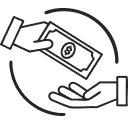 Lending Software Development Services
Lending Software Development Services Payment Gateway Software Development
Payment Gateway Software Development Accounting Software Development
Accounting Software Development AI-Driven Banking App Development
AI-Driven Banking App Development Insurance Software Development
Insurance Software Development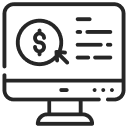 Finance Software Development
Finance Software Development Loan Management Software Development
Loan Management Software Development Decentralized Finance Development Services
Decentralized Finance Development Services eWallet App Development
eWallet App Development Payment App Development
Payment App Development Money Transfer App Development
Money Transfer App Development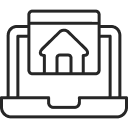 Mortgage Software Development
Mortgage Software Development Insurance Fraud Detection Software Development
Insurance Fraud Detection Software Development Wealth Management Software Development
Wealth Management Software Development Cryptocurrency Exchange Platform Development
Cryptocurrency Exchange Platform Development Neobank App Development
Neobank App Development Stock Trading App Development
Stock Trading App Development AML software Development
AML software Development Web3 Wallet Development
Web3 Wallet Development Robo-Advisor App Development
Robo-Advisor App Development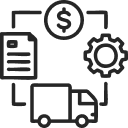 Supply Chain Management Software Development
Supply Chain Management Software Development Fleet Management Software Development
Fleet Management Software Development Warehouse Management Software Development
Warehouse Management Software Development LMS Development
LMS Development Education App Development
Education App Development Inventory Management Software Development
Inventory Management Software Development Property Management Software Development
Property Management Software Development Real Estate CRM Software Development
Real Estate CRM Software Development Real Estate Document Management Software
Real Estate Document Management Software Construction App Development
Construction App Development Construction ERP Software Development
Construction ERP Software Development
